A polymeric protein induces specific cytotoxicity in a TLR4 dependent manner in the absence of adjuvants
- PMID: 23029192
- PMCID: PMC3454435
- DOI: 10.1371/journal.pone.0045705
A polymeric protein induces specific cytotoxicity in a TLR4 dependent manner in the absence of adjuvants
Abstract
Lumazine synthase from Brucella spp. (BLS) is a highly immunogenic decameric protein. It is possible to insert foreign peptides or proteins at its ten-amino acid termini. These chimeras elicit systemic and oral immunity without adjuvants, which are commonly needed in the formulation of subunit-based vaccines. Here, we show that BLS induces the cross presentation of a covalently attached peptide OVA(257-264) and a specific cytotoxic response to this peptide in the absence of adjuvants. Unlike other subunit-based vaccines, this chimera induces rapid activation of CTLs and a specific cytotoxic response, making this polymeric protein an ideal antigen carrier for vaccine development. Adoptive transfer of transgenic OT-I T cells revealed efficient cross presentation of BLS-OVA(257-264)in vivo. BLS-OVA(257-264) immunization induced the proliferation of OVA(257-264)-specific CD8+ lymphocytes and also increased the percentage of OVA(257-264)-specific CD8+ cells expressing the early activation marker CD69; after 5 days, the percentage of OVA(257-264)-specific CD8+ cells expressing high levels of CD44 increased. This cell subpopulation showed decreased expression of IL-7Rα, indicating that BLS-OVA(257-264) induced the generation of CD8+ effector cells. BLS-OVA(257-264) was cross presented in vitro independently of the presence of a functional TLR4 in the DCs. Finally, we show that immunization of wild type mice with the chimera BLS-OVA(257-264) without adjuvants induced a strong OVA(257-264)-specific effector cytotoxic response. This cytotoxicity is dependent on TLR4 as is not induced in mice lacking a functional receptor. These data show that TLR4 signaling is necessary for the induction of a cytotoxic response but not for antigen cross presentation.
Conflict of interest statement
Figures
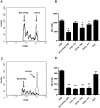
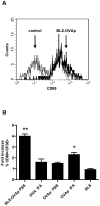

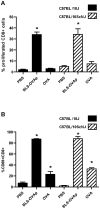

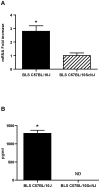
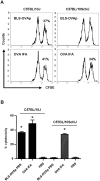
Similar articles
-
Brucella spp. Lumazine Synthase Induces a TLR4-Mediated Protective Response against B16 Melanoma in Mice.PLoS One. 2015 May 14;10(5):e0126827. doi: 10.1371/journal.pone.0126827. eCollection 2015. PLoS One. 2015. PMID: 25973756 Free PMC article.
-
ISCOMATRIX adjuvant combines immune activation with antigen delivery to dendritic cells in vivo leading to effective cross-priming of CD8+ T cells.J Immunol. 2011 Jul 1;187(1):55-63. doi: 10.4049/jimmunol.1004114. Epub 2011 May 25. J Immunol. 2011. PMID: 21613613 Free PMC article.
-
An agonistic anti-Toll-like receptor 4 monoclonal antibody as an effective adjuvant for cancer immunotherapy.Immunology. 2019 Oct;158(2):136-149. doi: 10.1111/imm.13095. Immunology. 2019. PMID: 31515801 Free PMC article.
-
A new TLR2 agonist promotes cross-presentation by mouse and human antigen presenting cells.Hum Vaccin Immunother. 2015;11(8):2038-50. doi: 10.1080/21645515.2015.1027467. Hum Vaccin Immunother. 2015. PMID: 26024409 Free PMC article.
-
Vaccine adjuvants to engage the cross-presentation pathway.Front Immunol. 2022 Aug 1;13:940047. doi: 10.3389/fimmu.2022.940047. eCollection 2022. Front Immunol. 2022. PMID: 35979365 Free PMC article. Review.
Cited by
-
Characterization of structural and immunological properties of a fusion protein between flagellin from Salmonella and lumazine synthase from Brucella.Protein Sci. 2017 May;26(5):1049-1059. doi: 10.1002/pro.3151. Epub 2017 Mar 16. Protein Sci. 2017. PMID: 28257593 Free PMC article.
-
Second career of a biosynthetic enzyme: Lumazine synthase as a virus-like nanoparticle in vaccine development.Biotechnol Rep (Amst). 2020 Jul 6;27:e00494. doi: 10.1016/j.btre.2020.e00494. eCollection 2020 Sep. Biotechnol Rep (Amst). 2020. PMID: 32714852 Free PMC article. Review.
-
Brucella infection and Toll-like receptors.Front Cell Infect Microbiol. 2024 Mar 12;14:1342684. doi: 10.3389/fcimb.2024.1342684. eCollection 2024. Front Cell Infect Microbiol. 2024. PMID: 38533384 Free PMC article. Review.
-
Brucella spp. Lumazine Synthase Induces a TLR4-Mediated Protective Response against B16 Melanoma in Mice.PLoS One. 2015 May 14;10(5):e0126827. doi: 10.1371/journal.pone.0126827. eCollection 2015. PLoS One. 2015. PMID: 25973756 Free PMC article.
-
Covalent coupling of Spike's receptor binding domain to a multimeric carrier produces a high immune response against SARS-CoV-2.Sci Rep. 2022 Jan 13;12(1):692. doi: 10.1038/s41598-021-03675-0. Sci Rep. 2022. PMID: 35027583 Free PMC article.
References
-
- Heath WR, Carbone FR (2001) Cross-presentation, dendritic cells, tolerance and immunity. Annu Rev Immunol 19: 47–64. - PubMed
-
- Yewdell JW, Norbury CC, Bennink JR (1999) Mechanisms of exogenous antigen presentation by MHC class I molecules in vitro and in vivo: implications for generating CD8+ T cell responses to infectious agents, tumors, transplants, and vaccines. Adv Immunol 73: 1–77. - PubMed
-
- Reimann J, Schirmbeck R (1999) Alternative pathways for processing exogenous and endogenous antigens that can generate peptides for MHC class I-restricted presentation. Immunol Rev 172: 131–152. - PubMed
-
- Buseyne F, Le Gall S, Boccaccio C, Abastado JP, Lifson JD, et al. (2001) MHC-I-restricted presentation of HIV-1 virion antigens without viral replication. Nat Med 7: 344–349. - PubMed
Publication types
MeSH terms
Substances
LinkOut - more resources
Full Text Sources
Molecular Biology Databases
Research Materials
Miscellaneous

